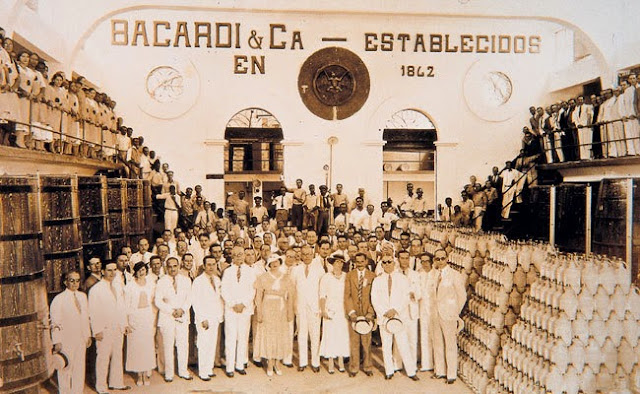Tequila
Tequila is the heart and soul of Mexico. It’s the national drink and it has been unfairly branded throughout history -- even after the conquistadors introduced distillation to mezcal in 1530.
Tequila has a bad reputation and it’s because we've all been there, lured by its ritualistic methods of consumption and its promise to take us to a higher level of consciousness, but in the end we’re left with a vague recollection of the night’s proceedings.
Tequila is one of the tastiest liquors ever made. It is produced from a mexican plant called agave, specifically, from blue agave. These plants grow in the sandy soil of Jalisco, Mexico, and have spiky leaves growing from a "piña" (Spanish for pineapple). This piña or core is the raw material for making tequila.

When the plant is ripe, leaves are chopped away by someone known as a "jimador". It is quite a demanding job since the plant must be cut in the precise moment. If the plant is too young, it won't have enough sugar to ferment into liquor. If the plant is too old, its sugar will have been used by the plant with reproduction purposes. Usually, the plants are cut on their twelfth year of life, but this may vary and it's jimador's task to decide when to harvest them.
Piñas normally weigh between 80 and 200 pounds. Approximately, 15 pounds of agave piña are required to produce one liter of tequila. When the plants are collected, they are cut in half or in little pieces and roasted in big "hornos" (Spanish for ovens). The heat activates a chemical process inside the piñas that transform starches into sugar. After the toasting process, the piñas are recollected an pressed hard to extract their juices.These juices are put in big fermenting tanks where the sugar will transform into alcohol. Before this, yeast is added to the tanks. Every distiller keeps their yeast as their bussiness secret. No one knows exactly in what quantities or what kind of yeast is added to the famous tequila brands like José Cuervo, Herradura or Jimador.

The fermenting process of the juices takes between 30 and 48 hours. After this, around 6% of juices is alcohol. After this, the liquid is silver tequila, which can be bottled and sold. It can also be put to age in oak barrels, transforming in gold tequila which is preferred by much.
There's also a more special kind of tequila known as Reposado (Spanish for rested). It's aged for a year or more, which makes it stronger. It can be aged for many time, creating a delicious liquor that it's usually the most expensive tequila.
After this process, the liquor is bottled and distributed to all the world, where people drink it pure, in shots, or in sweeter cocktails like the famous Tequila Sunrise or Margarita.

Tequila has a bad reputation and it’s because we've all been there, lured by its ritualistic methods of consumption and its promise to take us to a higher level of consciousness, but in the end we’re left with a vague recollection of the night’s proceedings.
Tequila is one of the tastiest liquors ever made. It is produced from a mexican plant called agave, specifically, from blue agave. These plants grow in the sandy soil of Jalisco, Mexico, and have spiky leaves growing from a "piña" (Spanish for pineapple). This piña or core is the raw material for making tequila.
When the plant is ripe, leaves are chopped away by someone known as a "jimador". It is quite a demanding job since the plant must be cut in the precise moment. If the plant is too young, it won't have enough sugar to ferment into liquor. If the plant is too old, its sugar will have been used by the plant with reproduction purposes. Usually, the plants are cut on their twelfth year of life, but this may vary and it's jimador's task to decide when to harvest them.
Piñas normally weigh between 80 and 200 pounds. Approximately, 15 pounds of agave piña are required to produce one liter of tequila. When the plants are collected, they are cut in half or in little pieces and roasted in big "hornos" (Spanish for ovens). The heat activates a chemical process inside the piñas that transform starches into sugar. After the toasting process, the piñas are recollected an pressed hard to extract their juices.These juices are put in big fermenting tanks where the sugar will transform into alcohol. Before this, yeast is added to the tanks. Every distiller keeps their yeast as their bussiness secret. No one knows exactly in what quantities or what kind of yeast is added to the famous tequila brands like José Cuervo, Herradura or Jimador.
The fermenting process of the juices takes between 30 and 48 hours. After this, around 6% of juices is alcohol. After this, the liquid is silver tequila, which can be bottled and sold. It can also be put to age in oak barrels, transforming in gold tequila which is preferred by much.
There's also a more special kind of tequila known as Reposado (Spanish for rested). It's aged for a year or more, which makes it stronger. It can be aged for many time, creating a delicious liquor that it's usually the most expensive tequila.
After this process, the liquor is bottled and distributed to all the world, where people drink it pure, in shots, or in sweeter cocktails like the famous Tequila Sunrise or Margarita.



Comments
Post a Comment